Sikorsky successfully demonstrated to the U.S. Army for the first time how an uncrewed Black Hawk helicopter flying autonomously can safely and reliably perform internal and external cargo resupply missions and a rescue operation.
Performed Oct. 12, 14 and 18 as part of the U.S. Army’s Project Convergence 2022 (PC22) experiment, the flights show how existing and future piloted utility helicopters could one day fly complex missions in reduced crew or autonomous mode. This would give Army commanders and aviators greater flexibility in how and when aircraft and pilots are used, especially in limited visibility or contested environments.
“We believe MATRIX technology is ready now for transition to the Army as they look to modernize the enduring helicopter fleet, and acquire Future Vertical Lift aircraft,” said Igor Cherepinsky, director of Sikorsky Innovations.
“In addition to increasing flight safety and reliability, MATRIX technology enables survivability in high tempo, high threat 21st Century Security environments where Black Hawk helicopters operate today, and DEFIANT X and RAIDER X helicopters could operate in the future. Uncrewed or reduced crewed helicopters could safely perform critical and lifesaving missions day or night in complex terrain and in contested battlespace.”
The Yuma Details
During PC22 Technology Gateway, the Sikorsky and DARPA team showed how the optionally piloted Black Hawk helicopter with no humans on board can deliver a large quantity of blood product unharmed by flying low and fast above ground level using the terrain to mask its signature; resupply troops with an external load; and re-route mid-flight to evacuate a casualty.
To begin the flight demonstrations, pilots flew and landed the Black Hawk aircraft, then activated the MATRIX system to give full control to the flight computer.
When the pilots exited, the helicopter autonomously completed the following mission demonstrations:
- Long-endurance Medical Resupply: The Black Hawk aircraft flew 83 miles while loaded with 400 units of real and simulated blood – totaling 500 pounds. On reaching 40 miles from its initial take-off point, the helicopter descended into a valley as low as 200 feet above ground level at 100 knots.
- Cargo Delivery and Casualty Evacuation (combined mission): The helicopter lifted off with a 2,600-pound external load attached to a 40-foot sling, and flew at 100 knots for 30 minutes toward a designated landing zone. While in flight, the helicopter was redirected, simulating a scenario in which a threat needed to be neutralized near the primary landing site. Sikorsky demonstrated how a ground operator with a secure radio and tablet can take control of the uncrewed helicopter, command it to release its sling load, and then land to evacuate a casualty from a nearby location. Once the manikin on a litter was secured inside the cabin, the ground operator launched the aircraft. During the return flight, a BATDOK health monitoring device integrated with the helicopter’s communications system relayed the patient’s vitals in real-time to a ground-based medical team.
What’s Next
The PC22 demonstrations were the second set of uninhabited Black Hawk flights this year. Sikorsky and DARPA will continue to work toward the transition of this technology for military operations, such as aircrew support and operations, logistics and medical resupply, casualty evacuation, and commercial applications such as firefighting, cargo and urban air mobility.


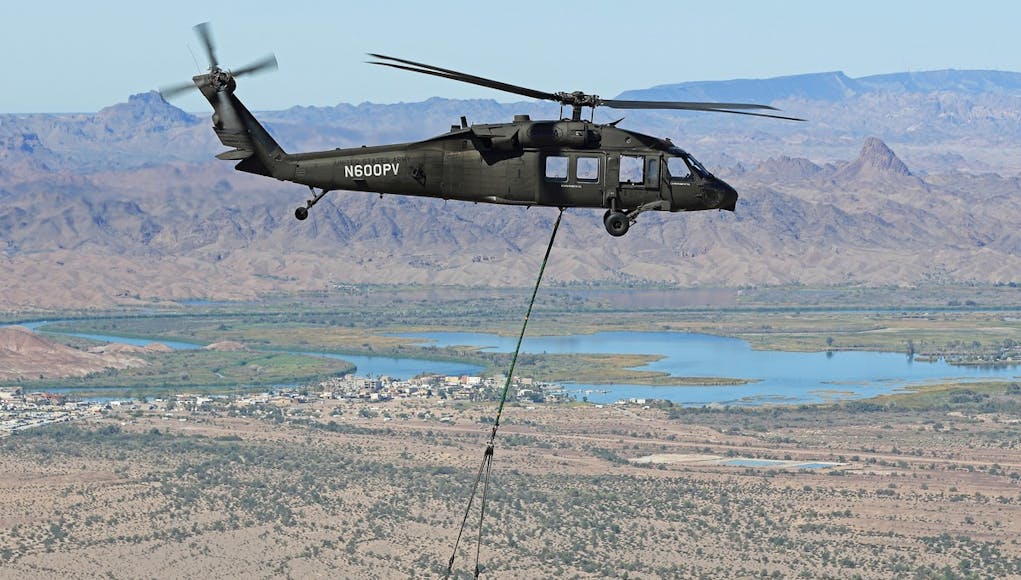
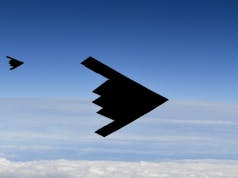
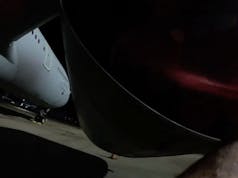

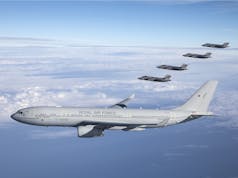

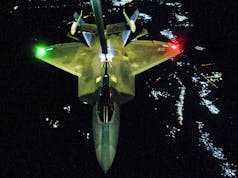

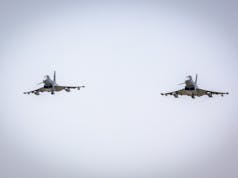

It’s the future…. obviously
DARPA, one of the few agencies I am pleased to help fund w/ tax dollars. Give them 5-10 yrs. to mature this tech., then revisit the issue. Believe it will be impressive.
Agreed, thanks to DARPA we have the internet after all.
Its interesting that Sikorsky seem to be focussing on autonomy for Black Hawks first with it seemingly promised for the Defiant in the future. Whereas Bell, their remaining competitor in the VFL, seems to have had autonomy from early on its its Valor tiltrotor.
Though it does mean that once the Black Hawks are replaced from their current role, rather than scrapping them, they could be refurbished to serve as drones instead.
(Meanwhile it’s interesting to see Bell has restarted development on the Vigilant, it’s unmanned autonomous tiltrotor drone to satisfy a USN need for maritime-strike from frigates and destroyers.)
As interesting is the fact that the US Army keeps on postponing the decision for the Blackhawk’s replacement. First the Army said September of this year, then October, now it’s in the “next several months.”
Fascinating stuff. So useful for helicopter cargo operations especially. Next will be working on how to get the self defence systems, secure landing area, door guns etc all integrated.
I’m sure a Kaman helicopter or 2 did similar unscrewed flights in Afghan some years ago.
Controlled by AI perhaps so leading to machines potently killing humans with no human input! Do we really want that?
Sorry to say it’s inevitable. AI is a continuing area that grows by the year. While I cannot say much, the areas where AI is applied already have proven the various algorithms outperform a human time and time again. You only gave to look at a northern English city to see 5 of the top 20 global AI defence contractors who a leading the industry.
Being ahead of the curve in this area is one that the UK government has got right, so far. Neurotrophic brains are not too far in the future. As the ‘systems’ get more attuned to having the ability in acting as a human, with Reasoned Learning improving deducted reasoning of a brain, we will be replacing more and more human operators.
Remember, war is a deadly business, it’s where the victor has all the spoils and enforces their policy on the defeated. If we can remove ‘our’ people from danger, we should.
Edit* It’s Neuromorphic brains. I don’t know how that changed between typing and posting,
Argh…perhaps the site itself is displaying Nwuromorphic tendencies…only a matter of time before posters are replaced…ack, gurgle (then dead silence)…🤔😳😉😁
Neuromorphic…see the site is already defending itself…
Likewise, the other side will remove ‘your’ people and protect their own. This is not a one-way street, technology never is. Neurotrophic brains is not a UK plc only domain.
The smoke and mirrors razzle-dazzle of Empire is long gone.
Who said it was? Only one other nation leads the UK in this field. Whereas, in other disciplines of AI, Germany, France, China, Japan and India lead. Of them, only one is really pursuing this branch of computer science in the military field as an “all out” effort.
The Terminator, redux (I’ll be baaack) 🤔😳😉
Lets hope that one day we can catch up with our cousins across the pond. We seem so risk averse that no one wants to green light any project beyond trials ‘just in case’ the tech goes bad. I get Risk Asessment, Process blah blah blah but someone up high needs to put their name to it and get all these drone concepts and demonstrators done and operational. The low tech is being used by unfriendly nations right now in conflict. Its a national security issue and we have capability gaps.
Well US makes this because they are big: population resources etc, so they can have a big bureaucracy. The problem is that UK and others that have pretentions to be “modern” want to replicate US while not having same resources. So they have the bureaucracy, consequent entropy and as result not the output.
LCS, Zummwalt, many other programs and even the qualified success because there is nothing else F-35 are here to demonstrate the high costs of American way.
Instead Israelis, Koreans, Turks and others make impact with small resources.
Thought there was some cooperative MOA or MOU re future (helicopter?) design between UK and US? Not certain re specific cast of players (USA, USAF, USN, AAC’, RAF, RN). Probably a mechanism for periodic review of areas of cooperation.
Yeah there is some kind of cooperation. Don’t ask me what it means.
The uk needs to concentrate on items it can develop and purchase in numbers to make it worth while and leave items that cost a lot to develop and will only be purchased in small numbers as it’s not worth it. Or partner up with other countries at the beginning of programs.
Things like nuclear deterrent, pensions etc etc all take up quite a bit of the defence budget. The USA has at least 10 maybe even 20 times the equipment budget of the uk. They so make some nice stuff though.
Autonomous helicopters undertaking complex cargo lifts, yet we still pay train drivers £50k a year.
Yeah but this is a test flight. It’s a whole different situation to make a system 100% accurate and deploy that system across the network and all the trains. Then you have the issue of public perception.
Train drivers pay isn’t really much in the scale of costs on the railways. By the time you developed and bought a system to do their jobs then hired engineers to run the system it may end up costing more.
I know very little about the costs of these types of systems so don’t know if it would be worth it.
Interesting. I am a bit sceptical, however, on how effective this is. Human strength is intuition and situational awareness. You can obviously also get it from a steering room if you have enough cameras, but being inside the chopper is giving you more direct feeling (and dangers) for the situation around you.
Must remember here that this is a company whose product is coming to the end of its life And so they are trying to promote some re-use of the carcasses as drones. I would say that if the mission was really that hazardous then you wouldnt send a chopper in.
A converted aircraft like this would be a bad use of resources as a lot of the superstructure is there to accommodate people. A properly designed rotor drone would be half the size and inherently a bit more stealthy due to the smaller size and also could be made from composites as you would not need to make it so crash resistant (to protect the pilot).
ALSO, it is a big lump, and would you want to cart a separate (drone) helicopter around just for the odd mission, or would you use it all the time? Does it need a qualified pilot, or just an x-box jockey? Would everyone be happy strapped in a stretcher with no onboard medic?
Just posing the questions.
AA
I can see some rescues going wrong with no human pilot on the spot to properly assess the conditions (e.g., weather, cliff side rescues, etc.)
AI will take care of that. The unexpected will be the issue.
Is this somehow a BAE project? That’s about the only time you hear anything on this website about technology that is leaving everyone else behind. Let’s just stop whining about how much more budget the US has and pumping ourselves up about how much we are punching above our weight. And world beating kit and whatnot and get down to actually doing it. Other countries are and it is relevant everyday..
We? Stop pretending my little Spam that you are from the UK.